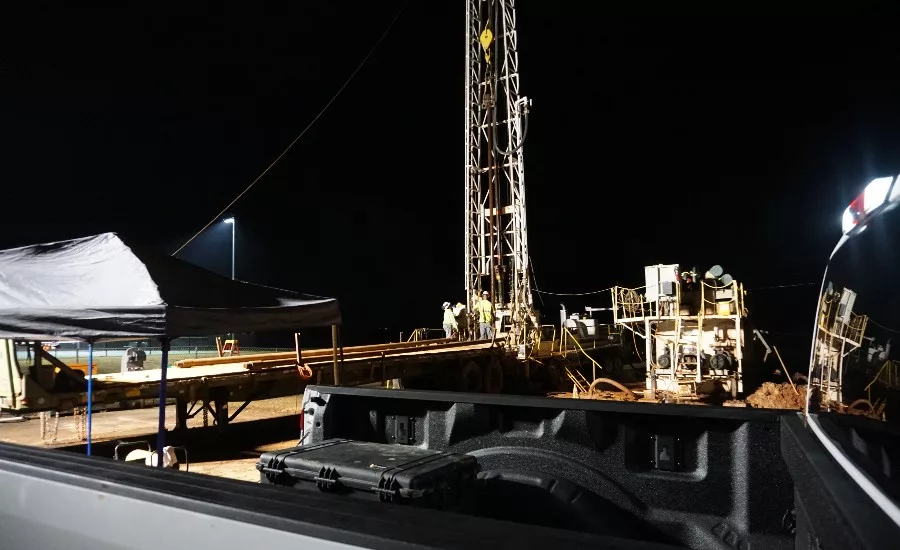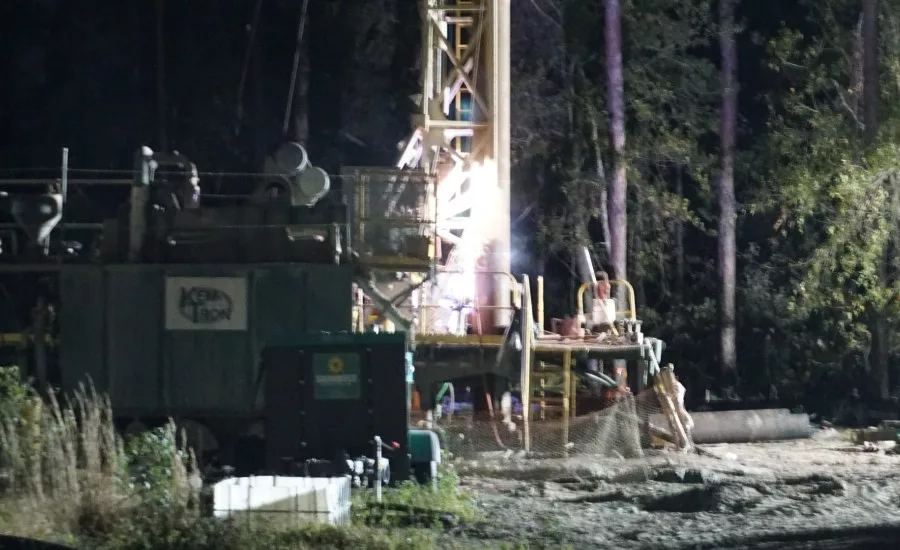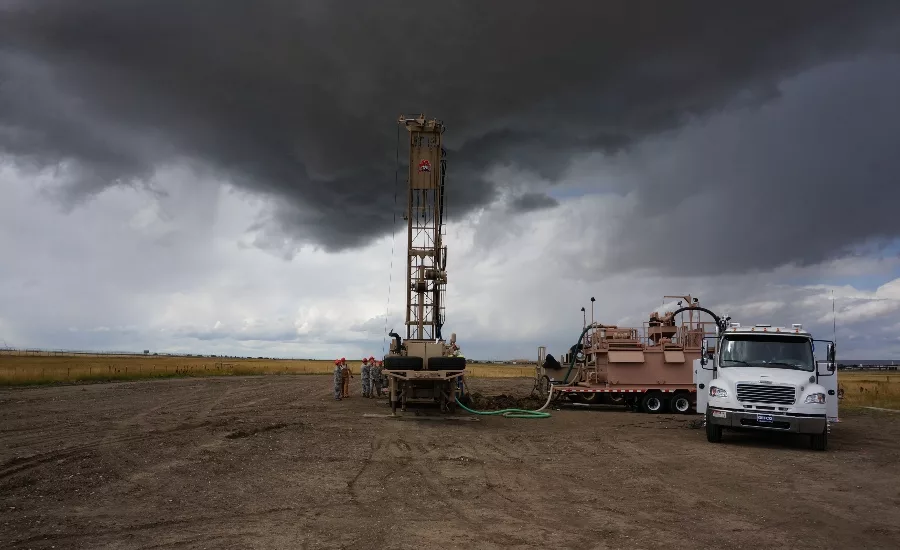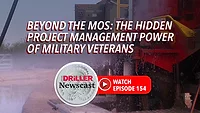Drillers, Invest in Time by Embracing Project Management
No Plan is Perfect, but 'No Plan' Can Leave You Stuck Wasting Time

Drillers work in all kinds of conditions — both above and below ground. Think about the conditions that threw your last tough project off track. Could you have anticipated them and made a plan?
Source: Brock Yordy photos

Planning for expected problems — It’ll be dark soon, where are the floodlights? — is straightforward. Drillers need to think about what could happen, and prepare for that too.

Is weather going to potentially affect your project today? When planning a project or even a day’s work, consider and list any factors that may affect the timeline.
There is only one way for a great driller to start 2021: by digging deep and embracing your inner project manager. Once you have found him or her, it’s time to identify our most valuable resource. I hope I got you thinking. Which one is he going to reflect upon? Is it water, oil or, maybe, people?
The most valuable resource that we cannot reproduce more of is time. A great driller embraces project manager tendencies, even if the project has an assigned project manager. Ultimately, the driller controls the tempo of a successful project. He or she knows and understands the time requirements and constraints through completion. Once time starts, we cannot go back and change what happens. Short of purchasing a DeLorean, building a flux capacitor and stealing uranium from the Libyans, you cannot regain lost time. Once we realize we cannot control the progression of time — or stop it, we can start to harness it effectively.
The first step in controlling time comes during the planning phase — before the drill, and the clock, starts turning to the right. The concept of planning, and executing that plan when the clock begins, seems easy. As the driller and primary leader onsite, you control the timeline and the clock’s start. Once you start, what impacts cause the timeline to fall behind schedule?
We build project timelines on perfect execution. However, we all know even superbly executed plans have at least one small x variable — sometimes more — that changes the timeline. Variables arise because we discover the unknown. We can spend a lifetime drilling in the same geographical region, creating excellent field knowledge, and unforeseeable downhole conditions can still derail the best expectations. Before every well, my father would say, “Brock, although you drilled the neighbor’s well, that doesn’t mean this one will be the same.” That paternal reminder set me up for success. It forces me to channel my inner project manager to evaluate my timeline and consider what x-factors could affect it.
What Are Your X Factors?
As a project manager builds their timeline, it is important to start a list of factors that could force the schedule to lose time. My list begins with an in-depth evaluation of the project’s location. I ask myself, what location factors can affect my goal of a successful, timely completion? Location easement, jobsite preparation and obstructions, both surface/subsurface, top that list. Equipment should not leave the laydown yard if we cannot effectively move off-road to the designated location, the site has not been cleared by 811, or if the site hasn’t been prepped for setup. The moment we commit equipment, the clock starts. We often mobilize with the best intentions of starting the same day, only to find ourselves stuck in the mud waiting on a tow truck or fighting uneven ground to level a rig.
Yes, I can hear you right now, “Hey man, that’s just part of the job, and you got to roll with what is dealt.” Or, “The project manager used internet satellite maps like he was James Bond, only to find out the overview was four years old.” I could not agree more with the first statement. However, if you do not allot for that time, you lose it forever. Regarding the satellite overview maps, if you don’t put actual boots on the ground, you will always cost the company money.
That leads me into another location stopper: weather. A physical site assessment will help us understand how project location conditions can change in a matter of minutes, depending on what Mother Nature throws at us. Both location and weather must be considered, and proper time given.
What’s Your (Unforeseen) Problem?
The most significant factor that creates loss-time situations is unforeseen problems. Great drillers and great project managers must collaborate to uncover all likely scenarios for project problems. Drillers, you have the experience and knowledge to know what problems to anticipate. If you are both the driller and project manager, then the collaboration should be with your drill team. However, if you are a two-person team, this is the opportunity for you, the project manager, and the drill team to put your heads together to plan preventive action.
Preventing loss of time is all about creating contingency plans. We should expect unforeseen problems to occur and be ready to react. Drillers, consider the last big problem that affected a project. Could you have anticipated that outcome? Most issues that affect our timeline or success did not materialize in one day, but over months and sometimes years of equipment use. A good leader anticipates all that can go wrong and has a plan prepared for each contingency.
An excellent leader with an informed team never truly loses time. Instead, they focus that time on preventive maintenance, project preparation, tooling and researching the next project.
Even with good plans, smart timelines and contingency plans, there will be moments that halt projects. Good project management pivots when a roadblock occurs and continues toward the end goal. It starts with a fully informed team onsite that understands the plan and all the steps required to complete the project. A knowledgeable team understands the end goal, and if it hits a roadblock at step B can jump to step F and effectively utilize potential lost time. The lost time that frustrates me the most is when the team had the opportunity to move on to another step or prepare for an anticipated challenge, but did not. When a team wastes valuable time on bad tasks, accountability falls on the jobsite leader. An excellent leader with an informed team never truly loses time. Instead, they focus that time on preventive maintenance, project preparation, tooling and researching the next project. If your jobsite leader cannot see alternative pathways to progress toward the end goal, it’s time to replace them.
Finally, to the leaders at the top, project success is about knowing your people and investing in what they require to utilize project time fully. Depending on your drilling company’s size, you could be the owner, lead driller and project manager. In that case, you are likely in the middle of every decision made onsite. On the other hand, maybe the company has grown and, although five years ago you were in the field every day, you now have responsibility for continued company growth. If that’s the case, it is vital to find a balance between healthy detachment and coaching. Our drillers, project managers and teams need to create effective plans with good decision-making on their own, while still knowing you’ve got their back. Investing in and understanding the team’s strategy becomes invaluable. The interest allows the opportunity for guidance if the plan goes off track and creates potential for lost time. Effective time management is about utilizing experience to create preventive actions, and passing on knowledge to guide the team to a successful outcome today and for future projects.
Looking for a reprint of this article?
From high-res PDFs to custom plaques, order your copy today!





